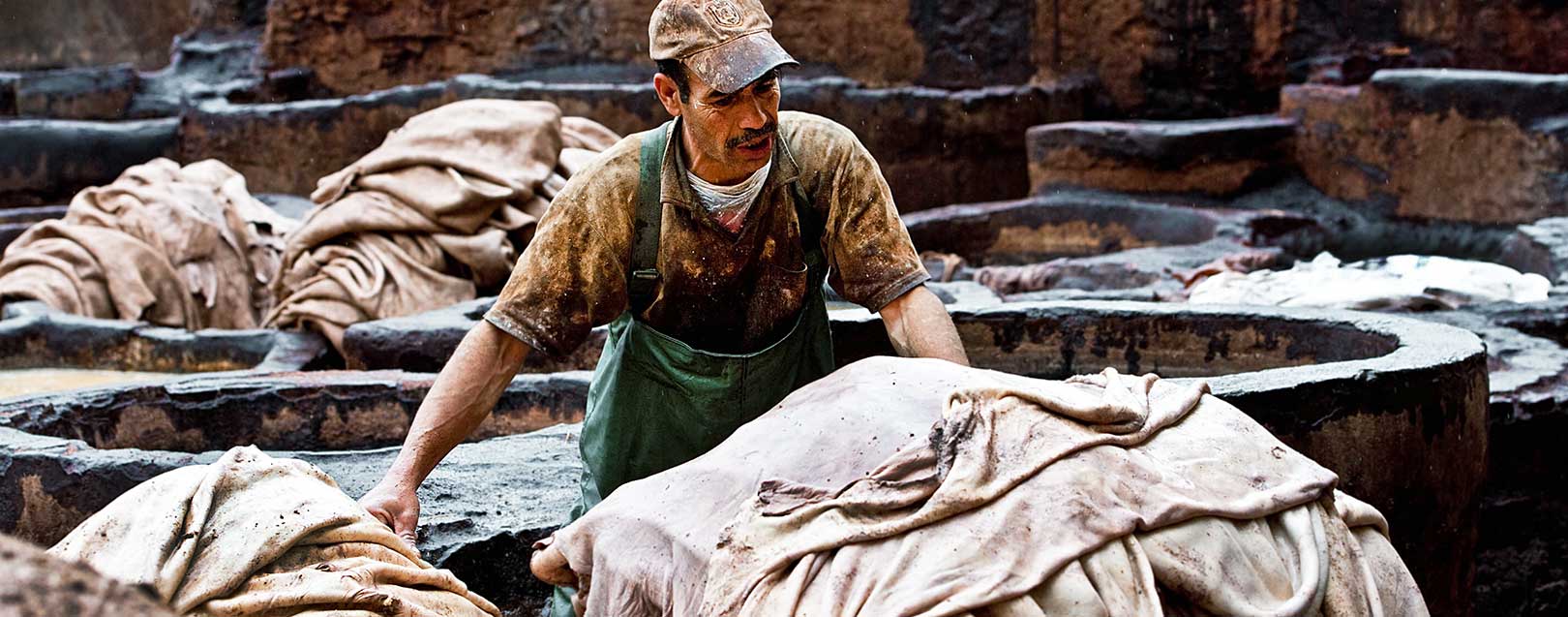
After ban on trade of cattle for slaughter, Ministry to announce Rs 4000 cr package for the leather industry
Sheela Mamidenna
With the Central government announcing curbs on cattle slaughter on May 26, the leather exports industry seems to be bracing itself for a rapid downward spiral. Though there seems to be a lot of misinterpretation on the latest notification, till the Government comes up with a plausible explanation, the Indian leather industry and its buyers are left frazzled.
According to media reports, major international fashion houses have started enquiring from their suppliers whether they would be able to meet their commitments.
Meanwhile, the Commerce and Industries Ministry has suggested a proposal to the Finance Ministry asking for a Rs 4,000-crore package, which includes both tax and non-tax benefits similar to the one announced for the textiles sector last year. According to officials a sum of Rs 500 crore has already been sanctioned by the Finance Ministry for the same. Given the current scenario, a financial package could to some extent act as a balm to the sector and improve its exports.
When enquired about the Rs 4000 crore package that the Ministry of Finance is likely to give, Rafiq Ahmed, President, The All India Skin and Hide Tanners and Merchants Association (AISHTMA), speaking to The Dollar Business said that “the textile industry was given a package to improve its capacity building and improve the industry. The Finance Minister Arun Jaitley had announced in the Budget that a similar package will be announced for the leather industry. Accordingly, the Department of Industrial Policy and Promotion (DIPP) has worked out a plan and circulated to all the ministries that there is a requirement of Rs 4500 crore in the leather industry. The package also includes funds for building mega leather clusters and employee benefits like ESI, PF etc.”
Regarding sanctioning of Rs 500 crore to the sector, Rafiq Ahmed clarified that “this amount was pending and is not a part of the package, that has been released by the Ministry of Finance. Officially the total package is yet to be announced by the Ministry. A proposal has been sent regarding the same. ”
Leather, is one of the most traded commodities in the world and the Indian leather industry accounts for around 12.93% of the global production of hides and skins. India is the second largest producer of footwear and leather garments in the world, accounting for 9% of the global footwear. When asked if the package would be of any help/benefit to the leather industry reeling with the imposed ban on slaughter of cattle announced last week by the Environment Ministry, Ahmed said, “the package is a long-term strategy for the industry, the cattle slaughter is a recent one, we will have to see how we will tackle it. The ban will not affect the industry on a long-term, it is going to be a short-term one. The ban on cattle slaughter will be for a shorter duration only.”
The major Indian players in the leather sector include Mirza International, Liberty Shoes, Relaxo Footwear and Bata India. The sector is of utmost importance to the government under the Make in India initiative and is expected to grow to $27 billion by 2020. Major brands that import leather from India are Armani, Hugo Boss, Prada, M&S and Zara.
Many of these major players are dependent on smaller leather units and tanneries in West Bengal, Kolkata being the hub, for meeting their commitments to supply various leather products such as belts, footwear, handbags, jackets etc. to international brands. With the ban on cow slaughter, these smaller units and subsequently the larger exporters would be affected for not being able to meet the demand. When asked how will the government put to rest the apprehensions of small leather units that cannot meet the demands from overseas, Rafiq Ahmed said, “big international brands don't source from smaller players, because they need a size or the supplier needs to meet the minimum size criteria in order to supply, which the smaller player may not be able to handle. So the smaller players sell to the local exporter or business houses who in turn export it. This is going to continue. There shouldn’t be a problem on that front.”
Suppliers in India, majorly small scale unit owners in West Bengal fear that the market could shift to Bangladesh or they may have to import leather at a higher price unless the government comes up with a solution. Commenting on this news, Ahmed said, much of the leather/leather products that Bangladesh exports is procured from Indian cows. The exporters shouldn’t fear the competition from Bangladesh as their export numbers are small when compared to Indian numbers. The animals that they slaughter are from India only. However, India could lose out on exports for a temporary period as leather procurers could turn to Bangladesh for supply. We have already put across our representations to the Ministry of Commerce on this and they are discussing it with the Ministry of Environment, that has imposed the ban. We have also put across our side of contention that excepting cow, allow other species of cattle such as bull, the ox for slaughter, why ban them?”
With regard to the short-term impact on the export numbers of leather, he said for the next 2-3 months there could be a fall of exports by 10%. Things will improve. Traders will find a way to meet the demand. They may procure the animals directly from the villagers if the animals are not brought to the mandis. For a shorter duration, there will be short supply.
“States such as Kerala and West Bengal are not ready to comply with the ban, and are allowing cow slaughter hence their export numbers may not get affected as much as other States. Though Kerala does not have its own tannery units, it can still source leather from its neighbouring states like Tamilnadu which will be of great help.”
With regard to employment issues in the leather industry he remarked, “if the ban is followed in spirit for a longer duration, it could turn out to be challenging for the industry. We have petitioned to the Ministry on this too.”
As per industry experts, Rs 1 crore investment in the sector could result in the creation of jobs for about 250 people. Currently, about 30 lakh people are directly employed in the leather and its allied industries.
During Apr 2016-Jan 2017, total leather and leather goods exports from India stood at $4.72 bn. As of FY 2017, the major buyers of India’s leather products are US, Germany and UK accounting for 15.69%, 11.82%, 10.85%, with Italy, Spain, France, Hong Kong, UAE, China, Netherlands, Belgium and Australia taking up the rest.





